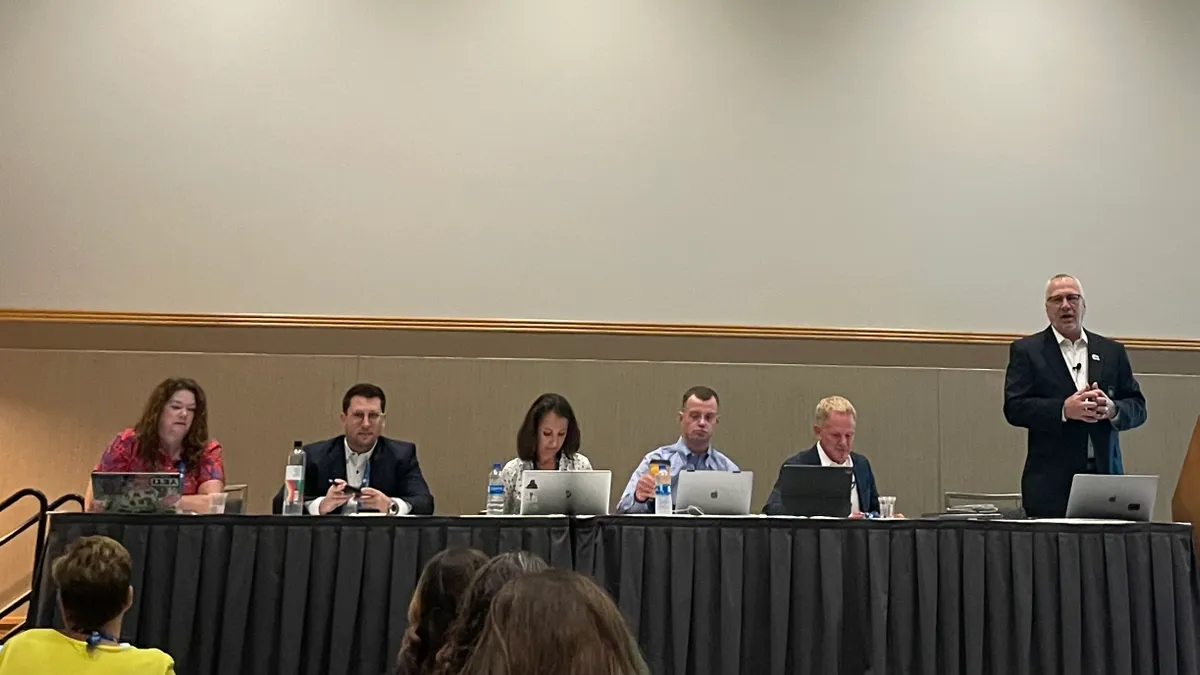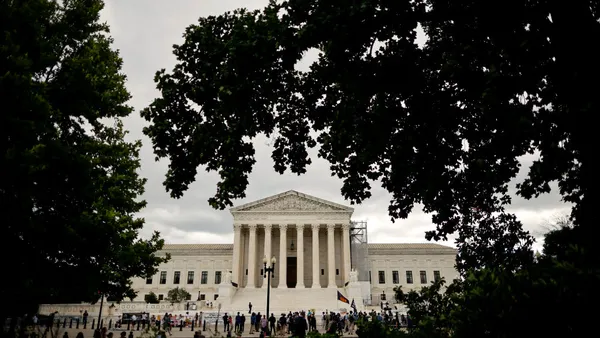Dive Brief:
- To help prepare both educators and the general public to brace for likely program and staff cuts once emergency pandemic funds run out, schools need to persistently communicate the message that September 2024 is the deadline for obligating this spending, a panel of district leaders and finance data experts said during a Wednesday session at the Association of School Business Officials International’s Annual Conference & Expo in Portland, Oregon.
- In addition, it’s vital that districts start looking to use data proving ESSER dollars spent so far are already showing short-term success, said Angela Smith, assistant superintendent of operations at West Aurora School District 129 in Illinois.
- Finding short-term returns on investment through data is helpful as states begin closer monitoring of districts' use of ESSER funds, panelists said. At the same time, it’s important for district leaders to communicate patience with their boards and broader communities — considering that proof of well-spent ESSER investments ultimately takes a little more time, said Michael Jacoby, executive director of Illinois ASBO.
Dive Insight:
As state education department audits ramp up on districtwide ESSER spending, Smith said, it’s likely states will find “somebody who didn’t do what they should.” A finding like that would then be used to negatively depict all districts as having wasted money during this unprecedented influx of federal funding, she said.
“We’re all going to be painted with that brush,” Smith said, but ultimately district leaders should be able to stand behind what they did by having previous documentation of ESSER spending. “Once again, the claws are out for public education, so people are going to find something to pick at, and just try to make sure you don’t give them a really wide opening for that.”
Meanwhile, districts are facing pressure from the U.S. Department of Education to spend every dollar of ESSER funding they receive so federal officials can tell a story about the huge outcome benefiting students from this historical investment, said Hannah Barrick, executive director of Pennsylvania ASBO.
Yet district leaders on the panel agreed that their communities generally do not care about or pay attention to their school systems’ communications around ESSER spending. Instead, the focus has been on COVID-19 mitigation measures in schools, such as masking requirements.
That’s why it's crucial to stand behind any data available on the positive impacts of ESSER investments, Smith said. For instance, she said districts could use recent surveys and disciplinary referral data to show that new restorative justice programs or social-emotional professional development opportunities are helping students.
For West Aurora schools, investing in staff capacity and mental health support has been a big focus with ESSER funds, Smith added.
Districts are also bracing for a fiscal cliff ahead of the ESSER spending obligation deadline.
And even if the public is not paying attention now, it’s likely they will notice when the funding runs out completely in 2024, said panelist Stan Wisler, a strategic account advisor at Frontline Education, a K-12 administrative software provider.
That’s why schools should communicate now that the ESSER spending will end, even if their community isn’t initially receptive to the message, he said. Then when the time comes, district leaders can point to previous communications to lessen any surprises to the public.













